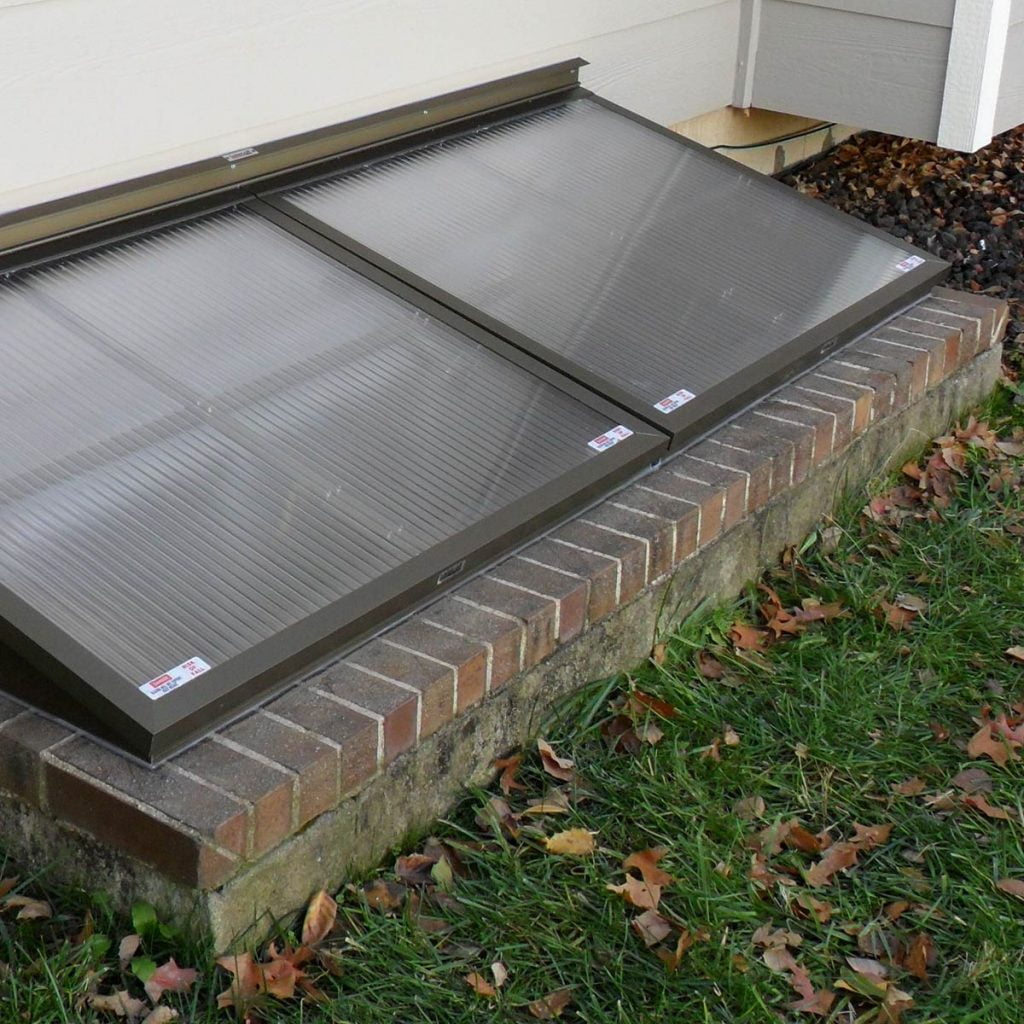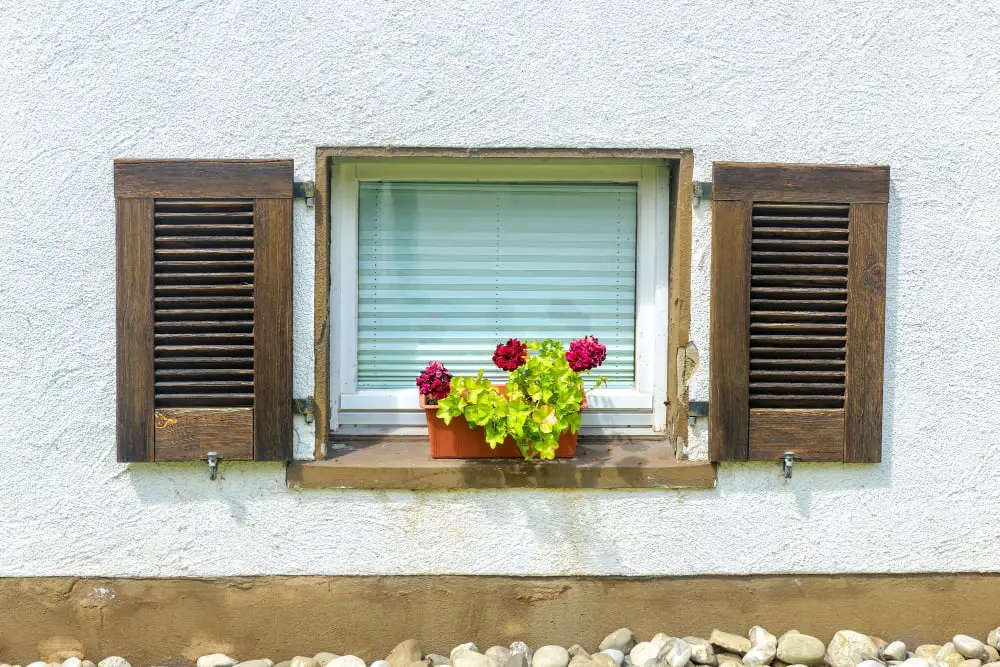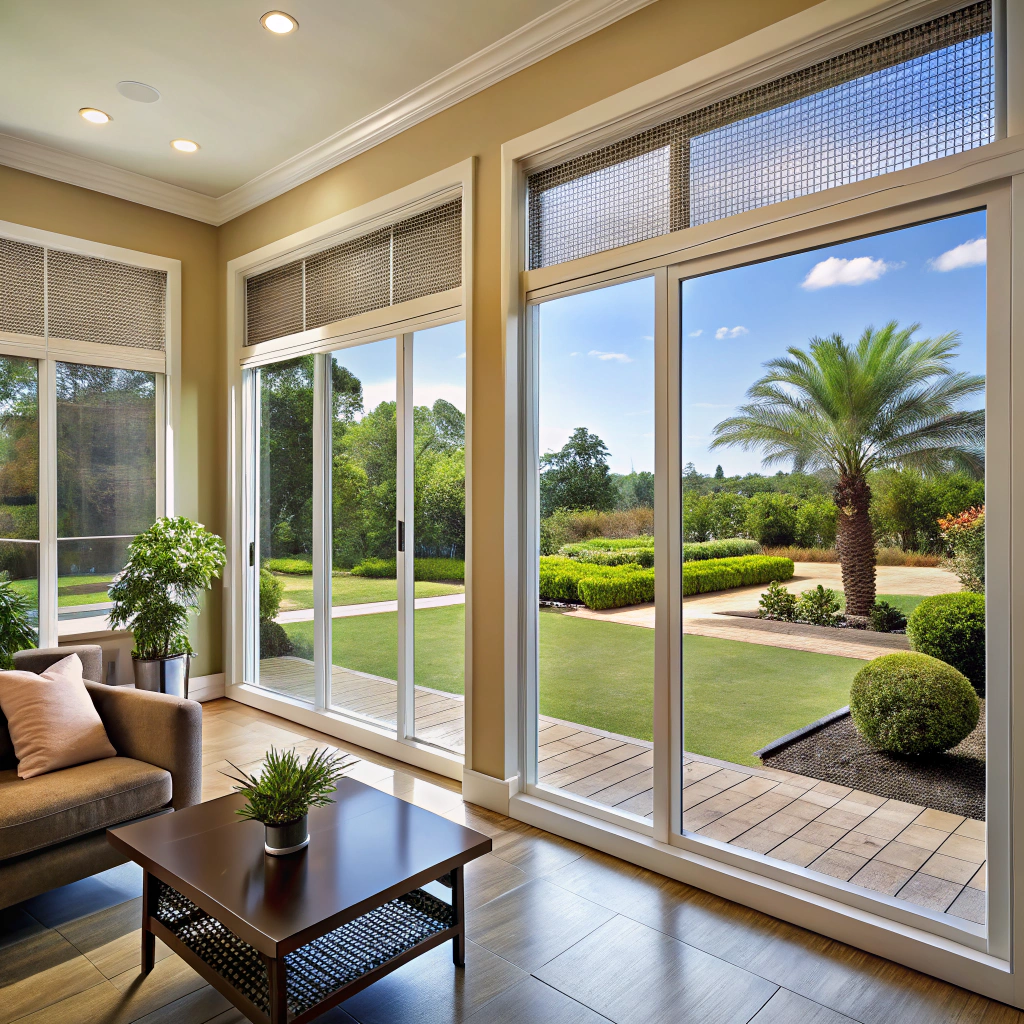Discover the essential purpose and benefits of window wells as we delve into their functionality in enhancing your home’s safety, aesthetics, and value.
Windows are an essential part of any home, providing natural light and ventilation. However, have you ever heard of a window well? It’s not a term that many people are familiar with, but it’s an important feature of many homes.
Window wells are essentially small excavations around basement windows that allow light to enter while also keeping water and debris out. In this blog post, we’ll take a closer look at what window wells are, why they’re important, and how they can benefit your home.
So let’s dive in!
Key takeaways:
- A window well is an excavation around a basement window.
- It allows natural light in and keeps water and debris out.
- Window wells enhance safety, aesthetics, and home value.
- Types of window wells include steel, concrete, brick, and wood.
- Proper maintenance includes cleaning and installing covers or liners.
Definition of Window Well

A window well is a small excavation that surrounds the exterior of a basement window. It’s typically made of metal, concrete, or plastic and serves as an extension to your home’s foundation.
The primary purpose of a window well is to allow natural light into your basement while also keeping water and debris out.
Window wells are essential for homes with below-grade basements because they provide an escape route in case of emergencies such as fires or floods. They also enhance the overall safety and security by preventing unauthorized access through windows.
In addition to their functional benefits, window wells can add aesthetic value to your home by creating visual interest on the exterior walls. With various styles available in different materials like stone veneer or brick patterns, you can choose one that complements your house design.
Purpose and Function

Window wells also serve as a barrier between the basement and outside elements, preventing water from seeping into your home’s foundation. They can also enhance the aesthetic appeal of your home by adding depth and dimension to its exterior design.
Window wells are typically made from durable materials like steel, concrete or plastic that can withstand harsh weather conditions. The material used for construction depends on various factors such as climate, budget constraints and personal preferences.
In addition to their practical uses, window wells offer several benefits for homeowners who want to improve their living spaces’ overall look and feel.
Benefits of Window Wells
One of the primary advantages is that they enhance your home’s safety by providing an emergency exit in case of fire or other emergencies. Egress window wells are designed specifically for this purpose and must meet specific building code requirements.
Another benefit is that window wells can improve the aesthetics and value of your home. They come in various types, styles, and materials to match any architectural design or personal preference.
You can choose from different colors, shapes, sizes as well as add accessories such as covers or liners.
In addition to enhancing safety and aesthetics, window wells also protect against water damage by keeping rainwater away from basement windows while allowing natural light into the space below ground level.
Types and Styles

The most common types of window wells include metal, concrete, brick masonry, timber/wooden window wells. Metal window wells are the most popular type due to their durability and affordability.
They are made from galvanized steel or aluminum materials that can withstand harsh weather conditions.
Concrete is another popular material used for making window well walls because it’s strong enough to support the weight of soil around it while also providing excellent insulation against heat loss during winter months.
Brick masonry is a more expensive option but provides an elegant look that complements any home design style. Timber/wooden windows provide a natural aesthetic appeal but require regular maintenance to prevent rotting or warping over time.
Materials Used

The most common materials used for window wells include metal, plastic, concrete, and stone. Metal window wells are the most popular choice due to their durability and affordability.
They come in different shapes such as round or square to fit any basement window size.
Plastic is another material that is gaining popularity because it’s lightweight yet sturdy enough to withstand harsh weather conditions without rusting or corroding over time.
Concrete is also a popular option for those who want something more permanent since it can be customized into various sizes and shapes according to your preference.
Stone offers an elegant look but comes at a higher cost than other options due to its natural beauty that requires skilled labor during installation.
Depth and Size Requirements

The depth of a window well should be at least 12 inches deeper than the bottom of the basement window. This ensures that water does not accumulate in the well and cause damage or flooding.
The size of a window well is also important as it determines how much light enters your basement. A larger-sized well allows more natural light into your home, making your space feel brighter and more inviting.
It’s essential to note that building codes dictate minimum sizes for egress windows, which require larger-sized wells for emergency exits from basements. Therefore, if you’re planning on installing an egress window in your basement or converting it into a living space with bedroom(s), you must adhere strictly to these regulations.
Selecting the Right Size
The size of the window well you need will depend on several factors, including the size and location of your basement windows, as well as local building codes.
To determine the appropriate dimensions for your window wells, measure both their width and projection from the foundation wall. The projection refers to how far out from the wall they extend.
It’s important to choose a depth that allows enough space for drainage while also providing ample light into your basement.
If you’re unsure about what size or style would work best with your home’s design or layout, consult with a professional contractor who specializes in installing window wells. They can help guide you through selecting an appropriate option based on local regulations and other considerations specific to where you live.
Egress Window Wells

They are required by building codes in most areas, and they can also add value to your home.
An egress window well must meet specific size requirements, which vary depending on the local building code. The minimum width should be 36 inches, while the height should be at least 24 inches.
The depth requirement varies based on the location and soil conditions but typically ranges between 44-48 inches.
It’s essential to note that installing an egress window well requires professional expertise as it involves cutting through concrete walls and excavating around them. A licensed contractor will ensure proper installation according to local regulations for safety purposes.
In addition to providing a safe escape route during emergencies, egress windows also allow natural light into basements making them more comfortable living spaces with increased functionality.
Building Code Requirements

As such, building codes require that window wells meet specific requirements to ensure the safety of occupants in case of emergencies. For instance, egress windows installed in basements must have a minimum opening size and height from the floor level to allow for easy escape during an emergency.
The International Residential Code (IRC) outlines specific guidelines for window well installation and design. The code requires that all basement bedrooms have at least one operable emergency exit with direct access to the outside or openable area like a window well.
There are regulations on how deep and wide your window well should be based on its location below grade level. These requirements vary depending on where you live since different regions may experience varying weather conditions such as heavy rainfall or snowfall.
Drainage System

Without proper drainage, water can accumulate in the well and cause damage to your home’s foundation or basement. To prevent this from happening, it’s essential to have a functional drainage system installed.
The most common type of window well drain is called a “gravity drain.” This type of drain relies on gravity to move water away from the window and into an underground pipe that leads away from your home. The pipe should be sloped at least 1/8 inch per foot so that water flows freely.
Another option for draining excess water out of your window wells is installing a sump pump. A sump pump will automatically remove any standing water in the well by pumping it out through pipes leading outside.
It’s also crucial to keep debris such as leaves, dirt, and rocks clear from around the perimeter drains or grates so they don’t clog up over time which could lead to flooding during heavy rainfalls.
Installation Process

The installation process can vary depending on the type of window well and whether you’re doing a DIY or professional installation.
For a typical DIY installation, start by digging out the area around your basement window to create space for the new window well. Make sure that there is enough room for drainage and that any pipes or wires are not in danger of being damaged during excavation.
Next, place gravel at the bottom of your newly dug hole before setting up any necessary brackets or supports according to manufacturer instructions.
Then carefully lower in place (or attach) each section of your new window well until they are securely fastened together with screws or bolts as directed by manufacturer guidelines.
DIY Vs Professional Installation

While DIY installation may seem like an attractive option for those who want to save money, there are some important factors to consider before taking on this project.
Firstly, installing window wells requires excavation work and can be physically demanding. If you don’t have experience with this type of work or lack the necessary tools and equipment, it’s best left in the hands of professionals who have both.
Secondly, improper installation can lead to serious problems such as water leakage into your basement or even collapse if not done correctly. Professional installers know how deep and wide each well should be based on local building codes requirements which vary from state-to-state.
Lastly but not least importantly is safety concerns that come with working around windows especially when digging close by them; hiring a professional ensures that all safety measures are taken care of during installation process.
Maintenance and Repair

Over time, debris can accumulate in the well, causing clogs that prevent water from draining properly. This can lead to water damage or even flooding if left unchecked.
To prevent these issues, it’s important to clean out your window wells at least once a year. Remove any leaves, dirt or other debris that has accumulated in the well using a small shovel or broom.
If you notice cracks or damage around the edges of your window well during cleaning and inspection process; repair them immediately with epoxy putty designed for masonry surfaces. If there are signs of rust on metal wells; sand off rusted areas then apply primer followed by paint suitable for outdoor use.
Preventing Common Problems
One of the most common issues is debris accumulation, which can clog the drainage system and cause water damage or flooding. To prevent this problem, it’s important to regularly clean your window well by removing leaves, dirt and other debris that may have accumulated over time.
Another issue that homeowners face with their window wells is rusting or corrosion due to exposure to moisture. This problem can be prevented by choosing high-quality materials such as galvanized steel or plastic for your window well construction.
Insects and pests are another concern when it comes to maintaining your window wells. These small spaces provide an ideal environment for insects like spiders and ants who love dark damp places where they can thrive undisturbed.
To keep these unwanted guests at bay, consider installing mesh screens on top of your windows so that bugs cannot enter through gaps in the grates.
Window Well Covers
They provide protection against debris, leaves, and other unwanted materials from entering the window wells. They help to prevent water damage by keeping rainwater out of the basement through proper drainage systems.
There are different types of window well covers available in the market today. Some popular options include polycarbonate and metal grates that offer durability and strength while allowing natural light into your basement.
Another type is mesh or netting covers that keep out debris while still allowing air circulation into your home’s lower level. These types of coverings can be easily removed for cleaning purposes.
When selecting a cover for your window wells, it’s important to consider factors such as size requirements, material quality, ease of installation/removal/maintenance/cleaning as well as cost-effectiveness in relation to budget constraints.
Window Well Liners
These liners come in a variety of materials, including plastic, metal, and stone. They can be customized to fit any size or shape of window well.
One significant advantage of using a liner is that it helps prevent soil erosion around the foundation by keeping dirt from washing away during heavy rainfalls. This not only protects your home’s structural integrity but also keeps your yard looking neat and tidy.
Another benefit is that they make cleaning much more manageable since you won’t have to worry about scrubbing away at rust or other stains on metal wells or dealing with chipped paint on wooden ones.
When selecting a liner for your window well, consider factors such as durability, ease-of-installation (if you’re doing it yourself), cost-effectiveness over time (including maintenance costs), aesthetic appeal (matching colors with house siding/trim) among others.
Accessory Options
One popular option is a window well cover, which provides protection against debris and water while allowing natural light to enter your basement. Window well covers come in various materials such as polycarbonate or metal mesh, and they can be customized to fit any size or shape of the window well.
Another accessory option is a liner for your window well. Liners provide an extra layer of protection against moisture damage by preventing water from seeping into the soil around your foundation walls.
They also add visual appeal by creating a clean look inside the excavation area.
Other accessories include ladders or steps for easy access in case of emergency situations like fire outbreaks; grates that prevent small animals from entering through open windows; decorative stones that give an aesthetic touch to your home’s exterior design; among others.
When selecting accessories for your window wells, it’s essential first to consider their purpose before choosing one based on its appearance alone.
Safety and Security

They can become a tripping hazard, especially for children and pets who may accidentally fall into them. To prevent accidents, it’s essential to install window well covers that are sturdy enough to support weight but still allow light in.
In addition to safety concerns, window wells also play an important role in home security. Burglars often target basement windows because they’re typically less visible than other windows on the main floor of the house.
Window well covers act as a deterrent by making it more difficult for intruders to gain access through these vulnerable areas.
To further enhance your home’s security, consider installing motion-activated lights around your window wells or investing in security cameras that cover these areas of your property.
Cost and Budget Considerations

The total cost of installation will depend on various factors such as the size, type, material used, and whether you choose DIY or professional installation. Generally speaking, pre-fabricated window wells can range from $50-$500 depending on their quality and design.
Custom-made window wells can be more expensive but offer a better fit for your home’s specific needs. If you opt for professional installation services rather than doing it yourself (DIY), this will add an extra expense to the overall project.
It’s important not only to consider the initial costs but also any long-term maintenance expenses that may arise in the future. For example, if your area is prone to heavy rainfall or snowfall during winter months then investing in high-quality drainage systems might be necessary which could increase costs further down the line.
Landscaping Around Window Wells

It’s also a practical way to prevent water from pooling in the well and causing damage to your basement. When landscaping around window wells, it’s important to consider factors such as drainage, soil type, and sunlight exposure.
One popular option for landscaping around window wells is planting flowers or shrubs that can thrive in low-light conditions. This not only adds color and texture but also helps absorb excess moisture from rainwater or snowmelt.
Another option is installing decorative rocks or stones that complement the exterior design of your home while providing a barrier against debris buildup in the well.
It’s crucial to ensure that any plants or materials used do not obstruct access points for emergency egress windows installed within egress window wells. Be mindful when selecting plants with thorns as they may pose safety hazards during maintenance activities like cleaning gutters.
Proper landscaping can enhance both functionality and aesthetics surrounding your house’s foundation by preventing water damage while adding curb appeal through creative designs using various materials like rocks/stones/flowers/shrubs etc., all without compromising on safety measures required by building codes!.
FAQ
What is purpose of a window well?
The purpose of a window well is to keep soil away from foundation openings, facilitate proper grading and drainage, and allow sunlight to enter below-grade rooms, reducing the need for artificial lighting.
Do you really need window wells?
Yes, window wells are necessary for basement windows that are entirely or partially below grade to prevent leaking, provide light, and meet emergency egress requirements if in a habitable room.
Why do people install window wells?
People install window wells to support the earth around a basement window, prevent dirt from collapsing onto it, and allow views and ventilation.
How do you properly maintain a window well?
To properly maintain a window well, clean debris regularly, ensure proper drainage, check for any cracks or damages, and install a window well cover for added protection.
What are the different materials used for window well construction?
Window well construction materials include steel, timber, plastic, masonry, and composite materials.
Are there any safety concerns or regulations associated with window wells?
Yes, window wells have safety concerns and regulations, including proper sizing for emergency escape, adequate drainage to prevent water accumulation, and installation of covers to deter accidents and debris buildup.
Recap




